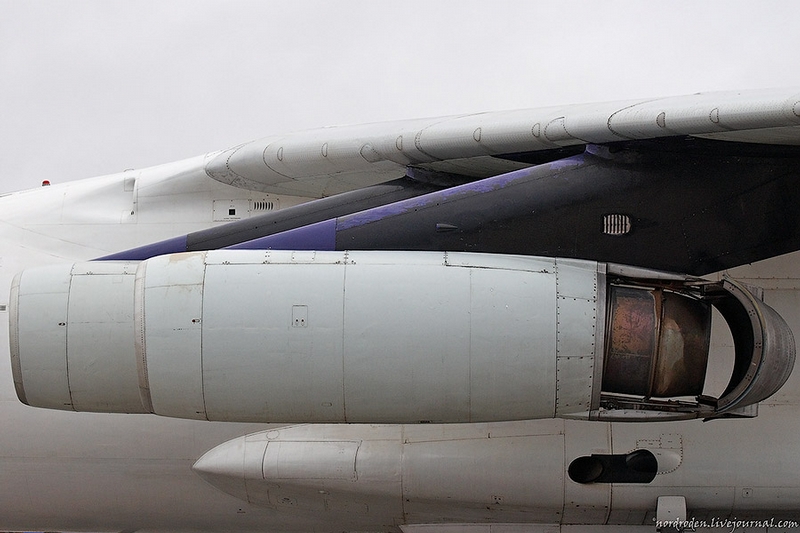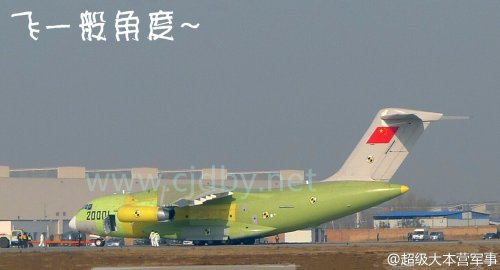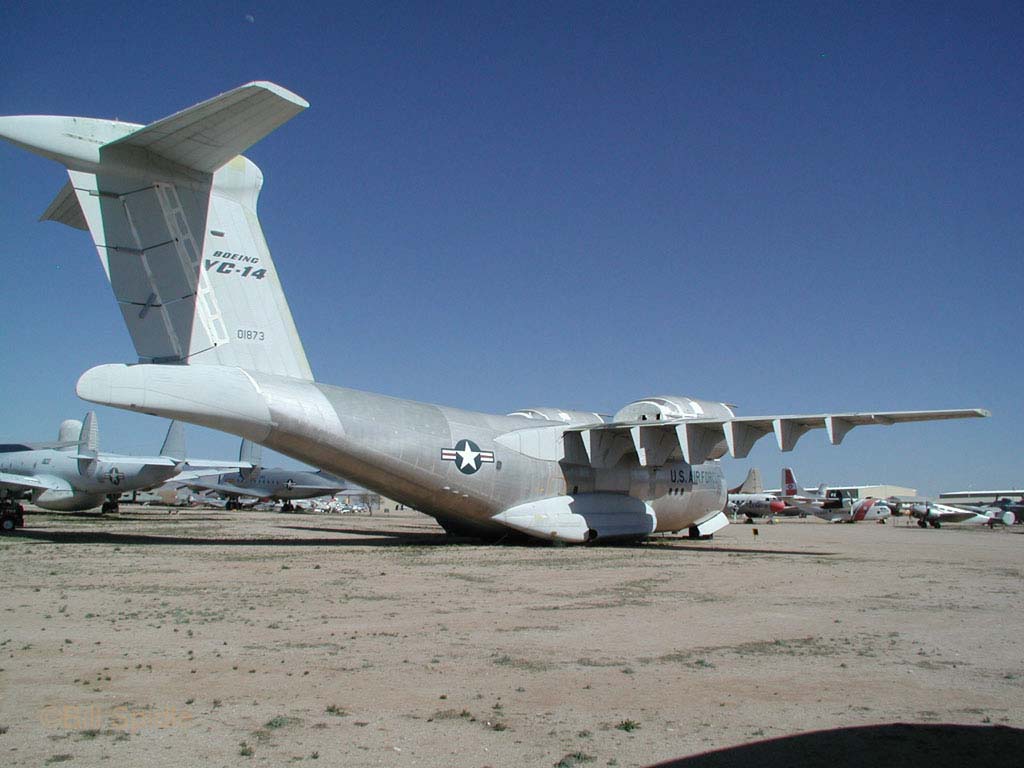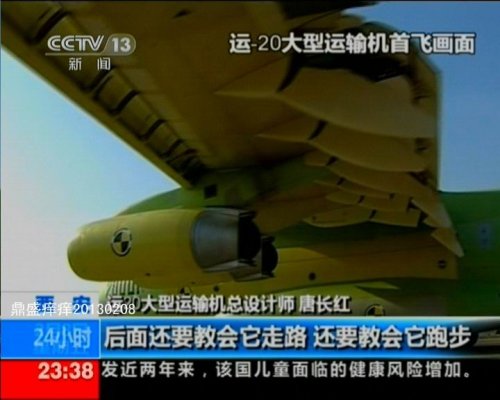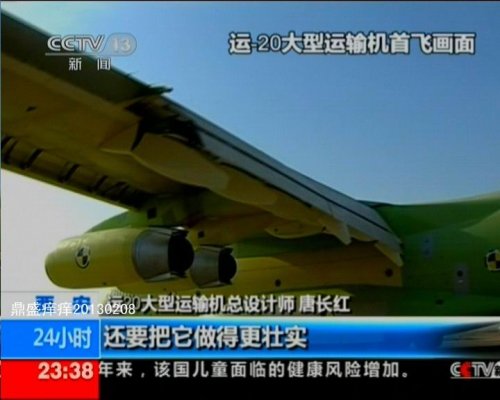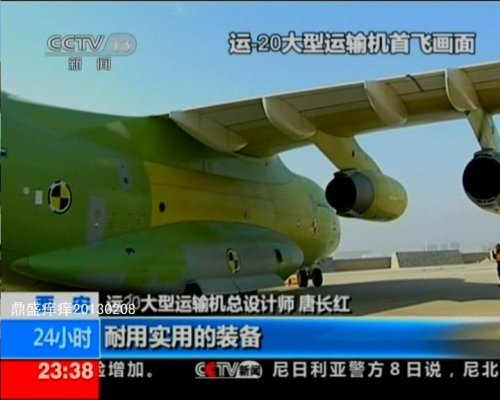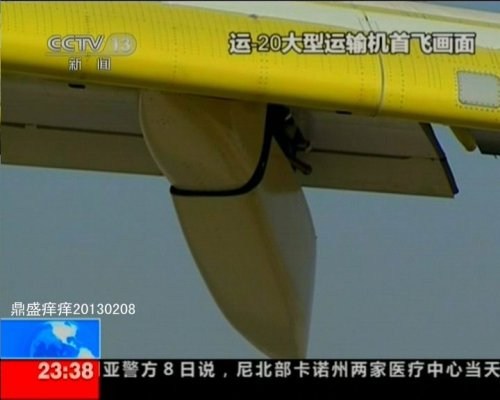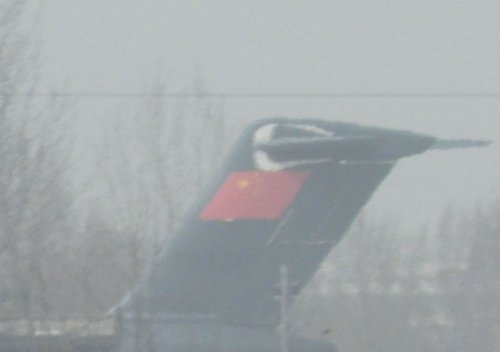Y-20 gives air power a push
(Source: China Daily) 2013-01-28
The successful maiden flight of the Y-20, China’s first domestically developed heavy air freighter, marks a step in the country’s goal of building a strategic air power, according to military experts and observers.
"A genuine strategic air power must possess a strong power projection capability, which is highly reliant on large aircraft, namely a strategic air freighter and a strategic bomber," Wang Yanan, deputy editor-in-chief at Aerospace Knowledge magazine and a military analyst, said.
"The long-range power projection capability of the Chinese air force still lags behind. But the Y-20 means we have made strides toward building a strategic air power."
He said the breakthrough in the technology of large military aircraft will substantially accelerate the development of China’s aviation industry and boost the drive to modernize the People’s Liberation Army.
On Saturday, China conducted a test flight of the Y-20, a large, multi-function air freighter that can perform various long-distance transportation tasks.
"The successful maiden flight of the Y-20 is important in promoting China’s economic and national defense buildup, as well as improving its emergency response and humanitarian aid abilities," the Ministry of National Defense said on its website on Saturday, adding that more experiments and test flights will be scheduled.
The official codename of the aircraft is Kunpeng, named after a legendary bird in Chinese mythology that can fly thousands of kilometers.
The jumbo air freighter is believed to have been developed by Xi’an Aircraft Industry, a subsidiary of Aviation Industry Corp of China, the major military aircraft manufacturer.
Large strategic air freighters in active service around the world include the Antonov An-225, the Ilyushin Il-76 and the Boeing C-17 Globemaster III.
The Y-20, with a crew of three, has a maximum payload of 66 metric tons and a maximum takeoff weight of more than 200 tons, China Youth Daily quoted military sources as saying. The high payload means the aircraft can fly the heaviest tank of the PLA — the 58-ton Type-99A2.
The length of the Y-20 is 47 meters and its wingspan is 50 meters, the report said.
An important addition
Sources said the aircraft began to be developed in the early 1990s. In 2006 it was listed in a national mid- and long-term technological development plan. In 2009, a senior executive at the Aviation Industry Corp of China told Chinese media the design of a "200-ton military aircraft" had been completed and production of prototypes had begun.
Photos of the Y-20 began to circulate on Chinese military websites on Dec 24, leading to speculation that the air freighter would soon conduct its first test flight.
Three days later, Yang Yujun, a spokesman for the Defense Ministry, confirmed at a news conference that China is "developing a large transport aircraft on our own to improve the capability of air transport".
Once in service, the Y-20 will significantly strengthen the PLA’s long-range transport capability, which has been plagued for many years by the absence of a domestically developed strategic air freighter.
The PLA air force now has a transport fleet that mainly consists of the Y-7, the Y-8 and their variants.
The Y-7 is designed and made based on the Soviet-designed Antonov An-24 series, and the Y-8 is based on the Antonov An-12. Both have relatively light payloads and cannot carry heavy-duty armored vehicles and tanks.
There is also an unknown but presumably small number of Ilyushin Il-76 large air freighters in the air force, enabling the PLA to conduct strategic transport and disaster-relief missions.
In 2008, large transport aircraft from the PLA air force took part in rescue and relief missions after a devastating earthquake in Southwest China. Three years later, the air force also sent four Ilyushin Il-76s to strife-torn Libya to rescue stranded Chinese citizens.
The missions have proven the importance of long-range aircraft and also exposed the embarrassing fact that China still lacks enough strategic air freighters, military experts said.
"The Ilyushin Il-76 was developed by the former Soviet Union in the 1970s and has largely lagged behind in terms of technology and functions, but China has no other choice but to continue buying it," Peng Yue, a military observer, wrote in Ta Kung Pao, a Hong Kong-based newspaper. He noted that the unreliable supply of Ilyushin Il-76 from Russia has constrained China’s production of a large, airborne early-warning and control system, which is installed on a modified Ilyushin IL-76 airframe.
Compared with the Russian airplane, the Y-20 is much more technically advanced in almost all areas, but due to the comparatively conservative aerodynamic design and the lack of a domestically developed engine, it still cannot rival the US’ Boeing C-17 Globemaster III, experts said.
"The United States Air Force has more than 350 large air freighters with a minimum payload of 50 tons, while the Russian Air Force has 368 strategic air freighters. I think the biggest gap between the PLA and them in terms of conventional arsenal lies in the strategic transport capability," Peng said.
He said the Y-20 will not only improve the Chinese military’s power projection and rapid deployment capabilities but also provide a reliable platform for domestically developed early warning and control, aerial refueling, and anti-submarine aircraft.
"The strategic importance of the Y-20 is even bigger than the J-20 stealth fighter jet and the aircraft carrier," he said.
Carrying a payload of up to 55 tons, the Y-20 is able of flying to destinations 4,500 km away from China, such as Guam in the western Pacific Ocean or Egypt, and if accompanied by a tanker aircraft it can even fly 9,600 km to Angola in southern Africa or Sydney in Australia, military analysts said.
"Our air force needs at least 100 strategic air freighters such as the Y-20 because transporting a brigade combat group alone needs 80 to 100 large air freighters," Wang at Aerospace Knowledge said. "If the PLA air force has 300 Y-20s, then its strategic transport capability will compete with that of the US air force."
Opportunities abound
In addition to its military implications, the Y-20 will bring many other benefits to China, said Liang Fang, a professor of strategy at the PLA National Defense University.
"Along with the expansion of our national interest, the heavy air freighters will ensure that we are able to safeguard our interests overseas," she said. "With them, we can transport our people or large equipment to farther destinations and retrieve them."
Du Wenlong, a senior researcher for the PLA Academy of Military Sciences, said: "The development of heavy transport aircraft, which is a cutting-edge equipment featuring advanced technology, will inject momentum to many related fields such as material science, engine research and manufacturing sectors, thus eventually upgrading the entire aviation industry of China."
Chinese military fans are also excited about the test flight of the Y-20.
"Good news has come again and again over the past two months. First we heard about the test flight of the J-31 stealth fighter jet, then the landing and takeoff of the J-15 on our aircraft carrier, and now we embrace the birth of the Y-20," said Qu Renming, a white-collar worker in Beijing. "The only concern for military fans is when can the Y-20 use our domestically developed engine and enter into service."
Wang added: "I think the test flights and other experiments with the Y-20 will last at least two years. And after the tests are finished, at least 10 aircraft will be manufactured each year."
Editor:Ouyang Dongmei
http://eng.chinamil.com.cn/news-channels/pla-daily-commentary/2013-01/28/content_5197556.htm
100 planes at 10 per year is going to tie up their production capacity for 10 more years after it comes in service.
Trident said:
wuguanhui said:
Trident said:
Another pretty funny aspect is the suggestion I read on a Russian forum, that Russia should purchase a handful, copy it and put it into production with PS-90s - sort of karma coming back for the J-11B

lol ;D
Xi'an would be flattered, I'm sure. Can I ask where you read this?
Paralay's forum. The comment was made in jest, obviously, but I thought the irony of it was priceless

Cheers

